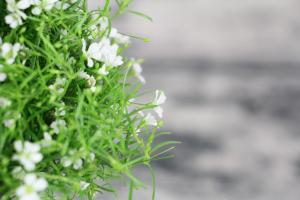How to Plant Peanut Seeds
Peanuts are a popular crop and a great source of protein. Planting peanut seeds can be a great hobby or a lucrative business. But, how do you plant peanut seeds? Here's a step-by-step guide to help you get started.
Preparing your Soil
The first step in planting peanut seeds is to prepare your soil. Peanuts prefer well-drained soil that is rich in nutrients. Before planting, loosen the soil to a depth of 6-8 inches with a garden fork or tiller. Remove rocks and weeds from the planting area. You may want to add organic matter such as compost, manure or peat moss to boost the soil's nutrients. This step is crucial to ensure that the peanut plants grow properly and produce high-quality nuts.
Choosing the Right Peanut Seeds
Selecting the right peanut seeds is another essential step. Buy seeds from a reputable source or collect seeds from your peanut harvest. Make sure the seeds are healthy, clean and dry. Check for any signs of damage or disease. It is recommended to choose seeds that are suited to your climate and soil conditions.
Planting the Seeds
Next, it's time for planting. Peanut seeds should be planted in the spring when the soil is warm, ideally above 60掳F. Use a hoe or planting tool to make rows about 36 inches apart. Dig shallow trenches about 2 inches deep and place the peanut seeds about 6 inches apart in the trench. Cover the seeds with soil and firm gently.
Watering and Fertilizing the Seedlings
Seedlings need regular watering and fertilizing. Keep the soil moist but not waterlogged, as waterlogged soil will cause the peanut seeds to rot. A balanced fertilizer can be applied once the seedlings emerge from the soil, but be careful not to over-fertilize. It is recommended to water seedlings once or twice a week, depending on the weather conditions.
Protecting the Plants
Peanut plants can be vulnerable to pests and diseases such as root-knot nematodes, fungal infections and insects. You can protect the plants by using organic or chemical pest control methods, depending on your preference. It's important to monitor the plants regularly and take action if any problems arise.
Harvesting the Peanuts
Finally, the time for harvesting arrives. Most peanut varieties take around four months to mature. When the plant starts to yellow and wilt, it's time to pull up the entire plant. After pulling, remove the peanuts from the plant and allow them to dry in the sun for one to two weeks. The skin will harden and turn brown. After the drying process, remove the peanuts from the shells and store them in a dry and cool area.
Conclusion
Planting peanut seeds can be a fun and rewarding experience. Proper soil preparation, seed selection, watering, fertilizing and protecting the plants from pests and diseases are all essential steps to ensure a successful harvest. With patience and dedication, you can enjoy a bountiful harvest of peanuts.

 how many times do yo...
how many times do yo... how many planted tre...
how many planted tre... how many pine trees ...
how many pine trees ... how many pecan trees...
how many pecan trees... how many plants comp...
how many plants comp... how many plants can ...
how many plants can ... how many plants and ...
how many plants and ... how many pepper plan...
how many pepper plan...





























